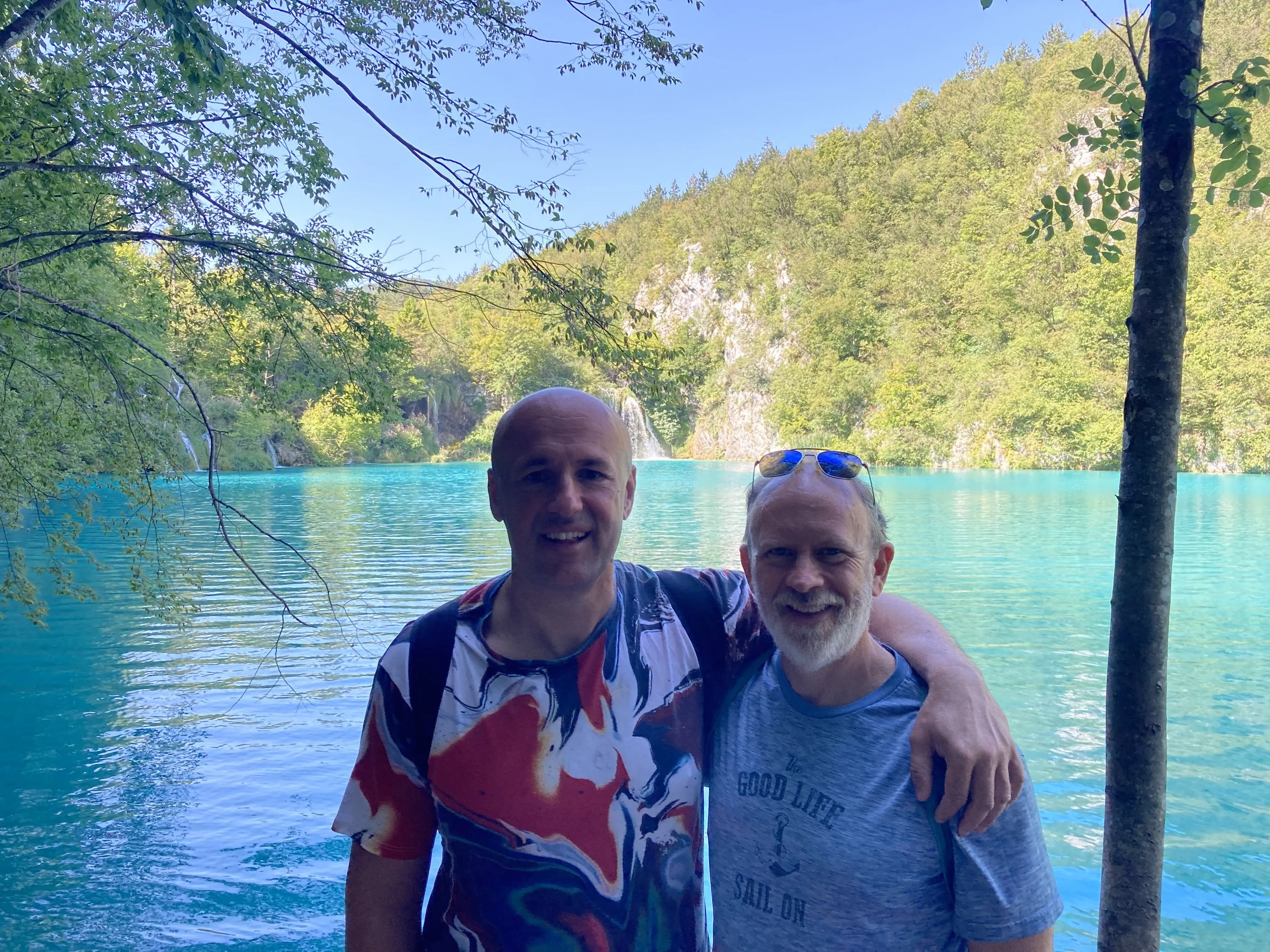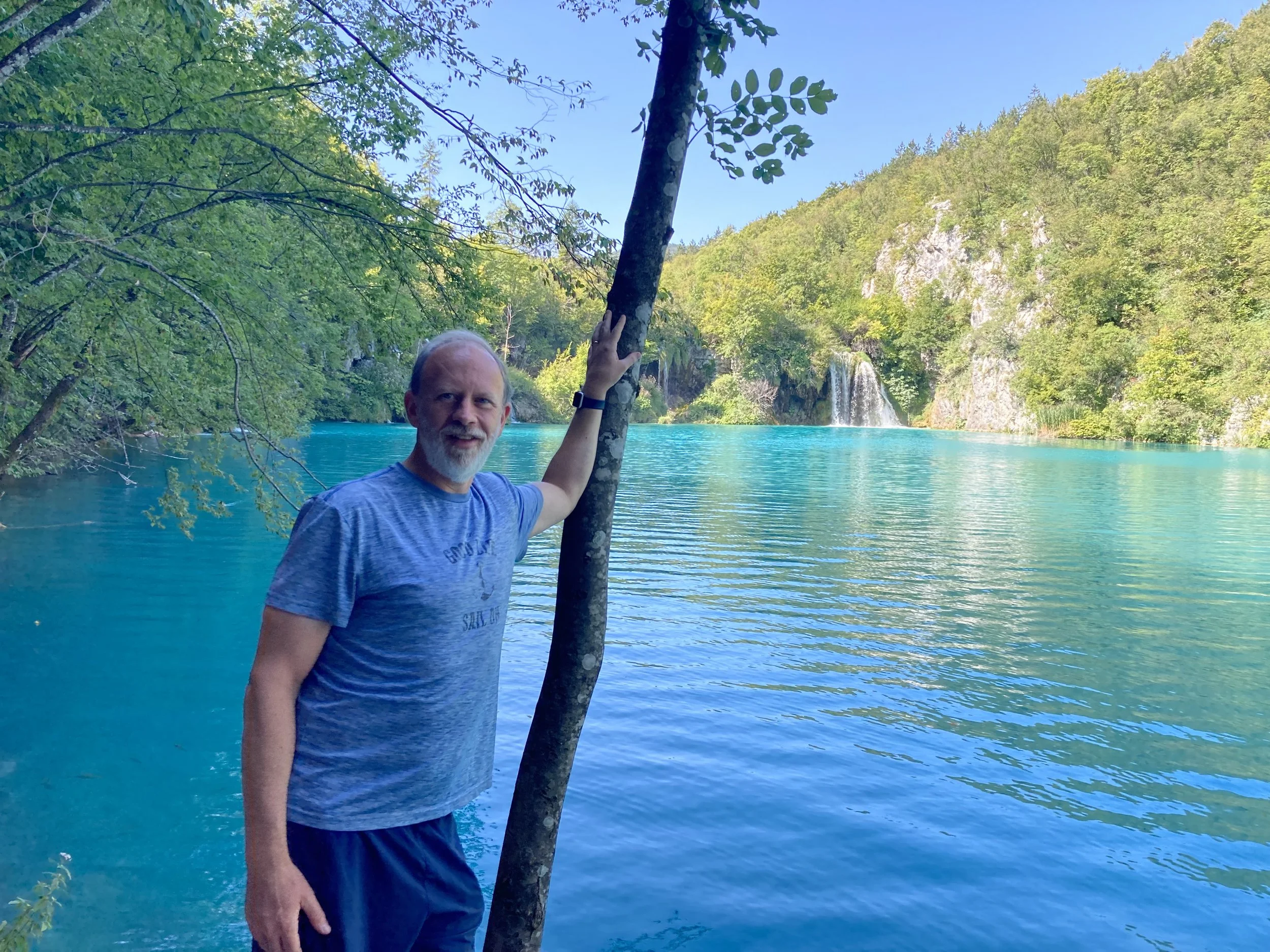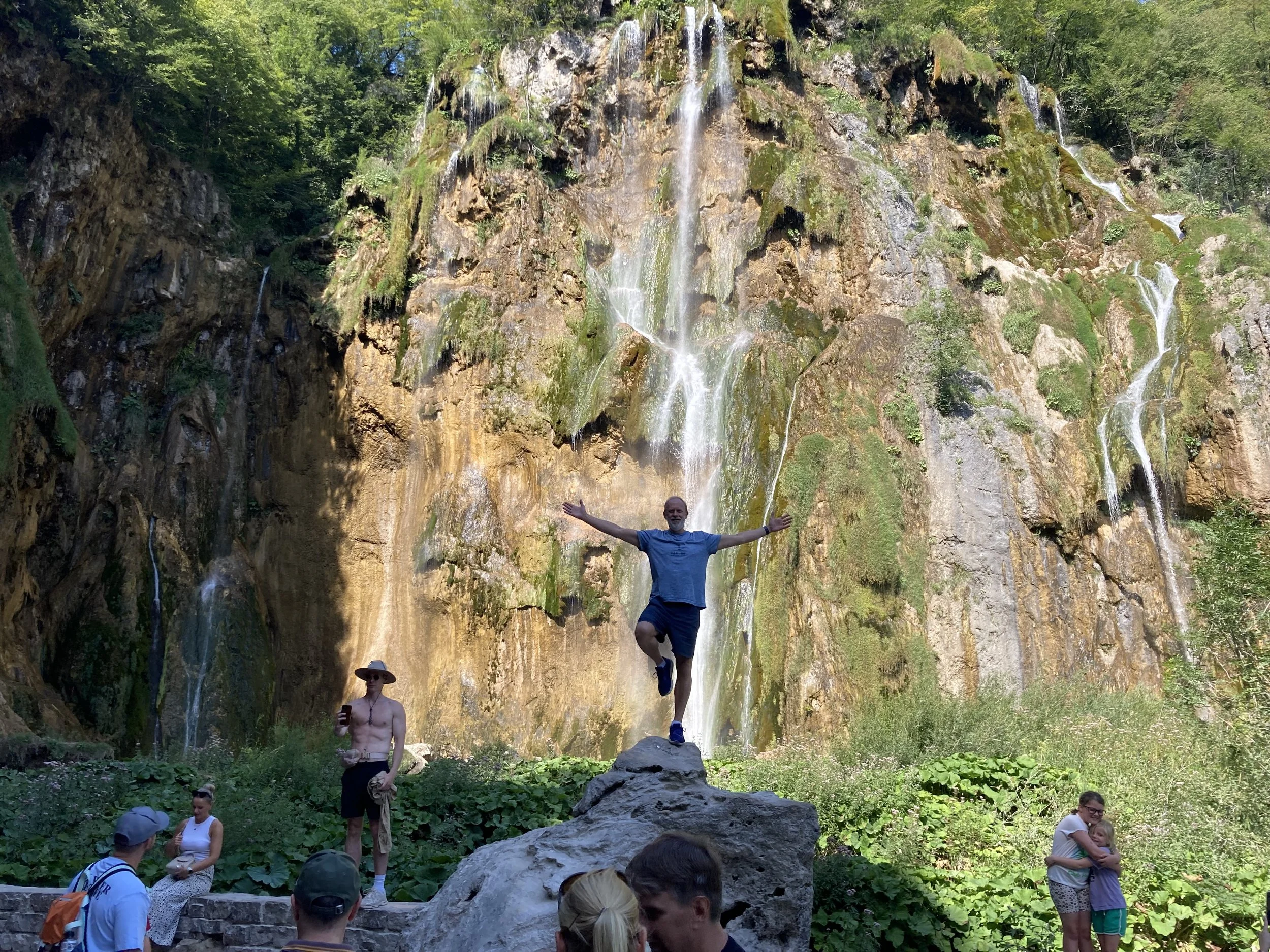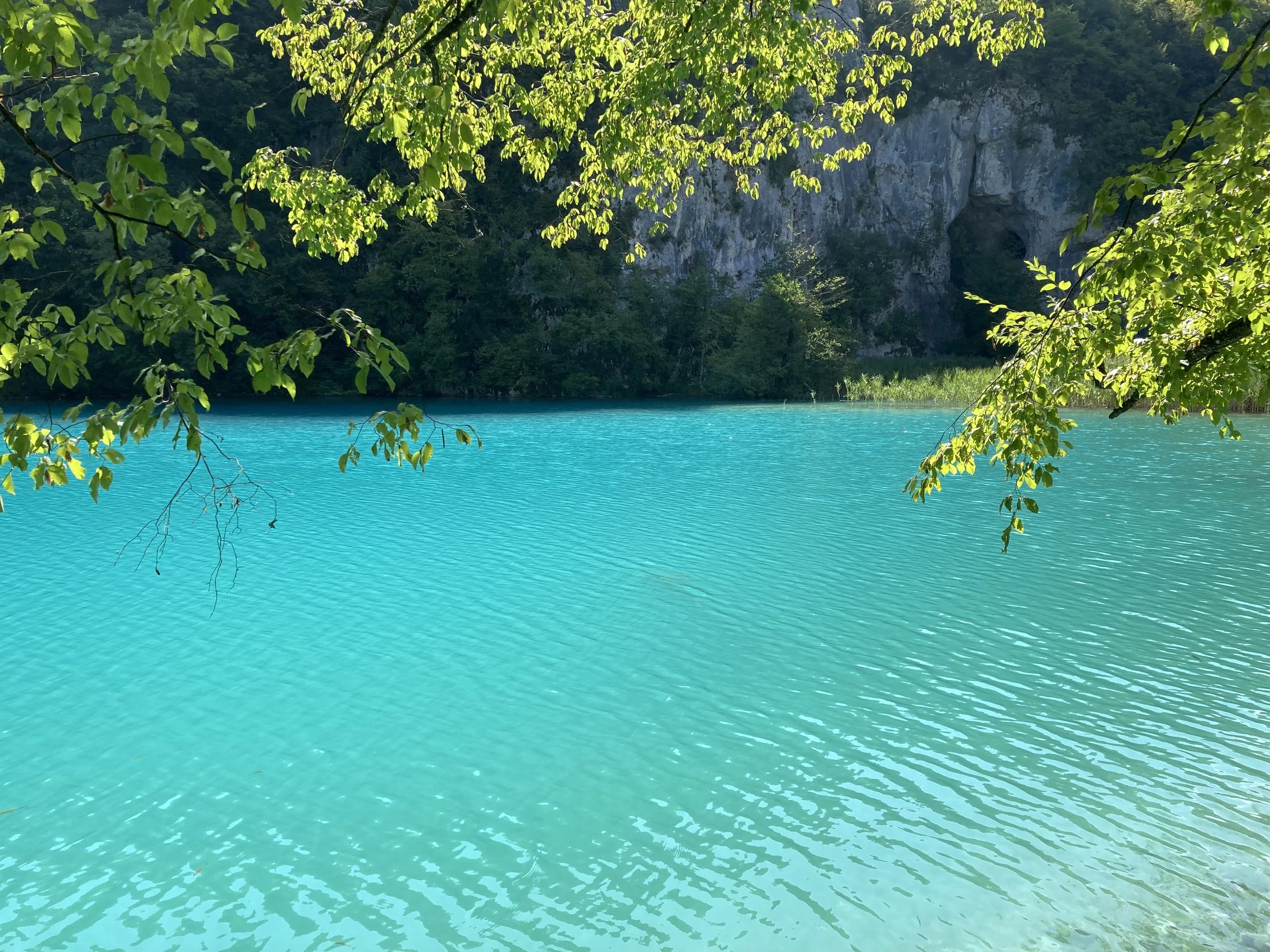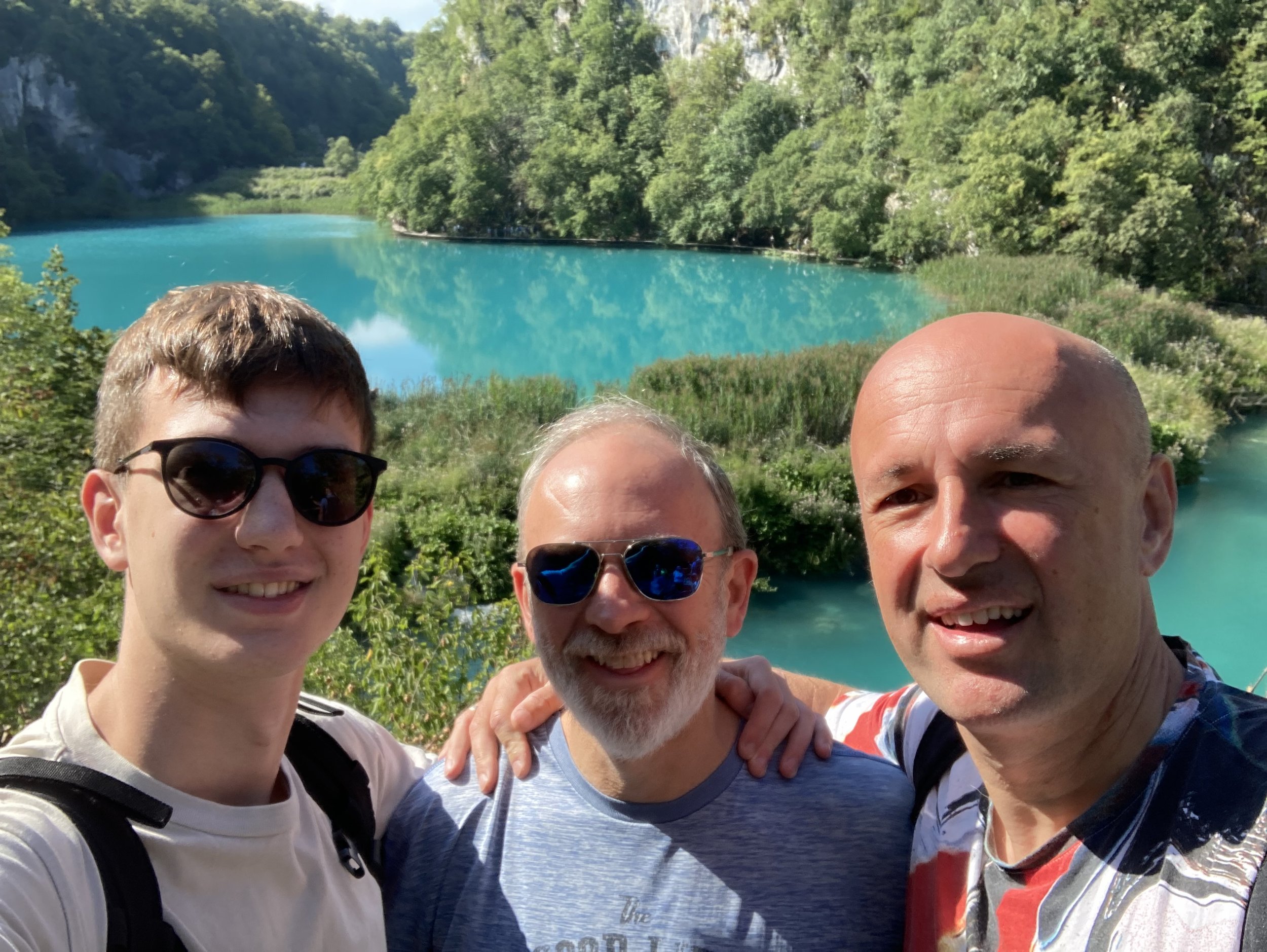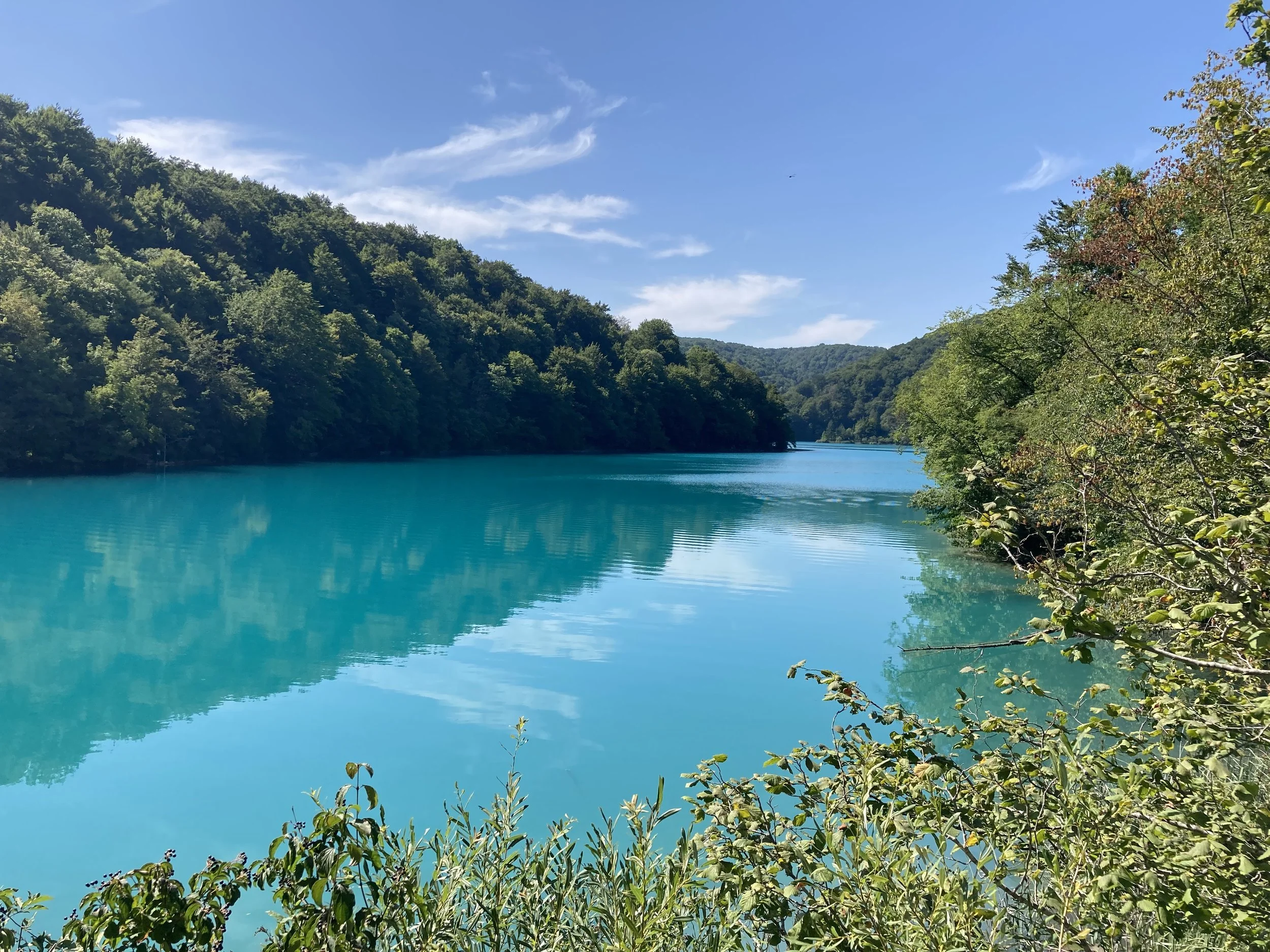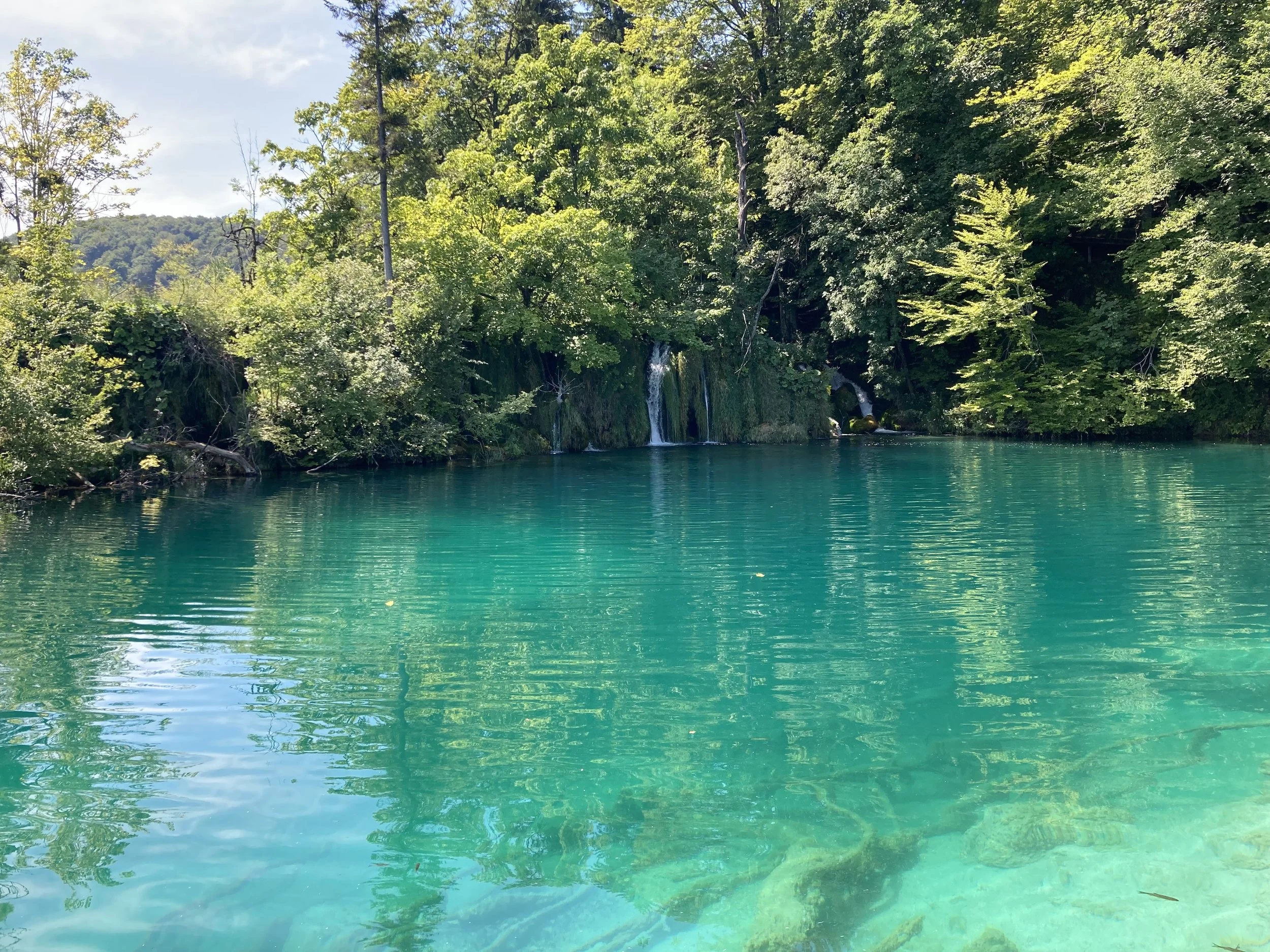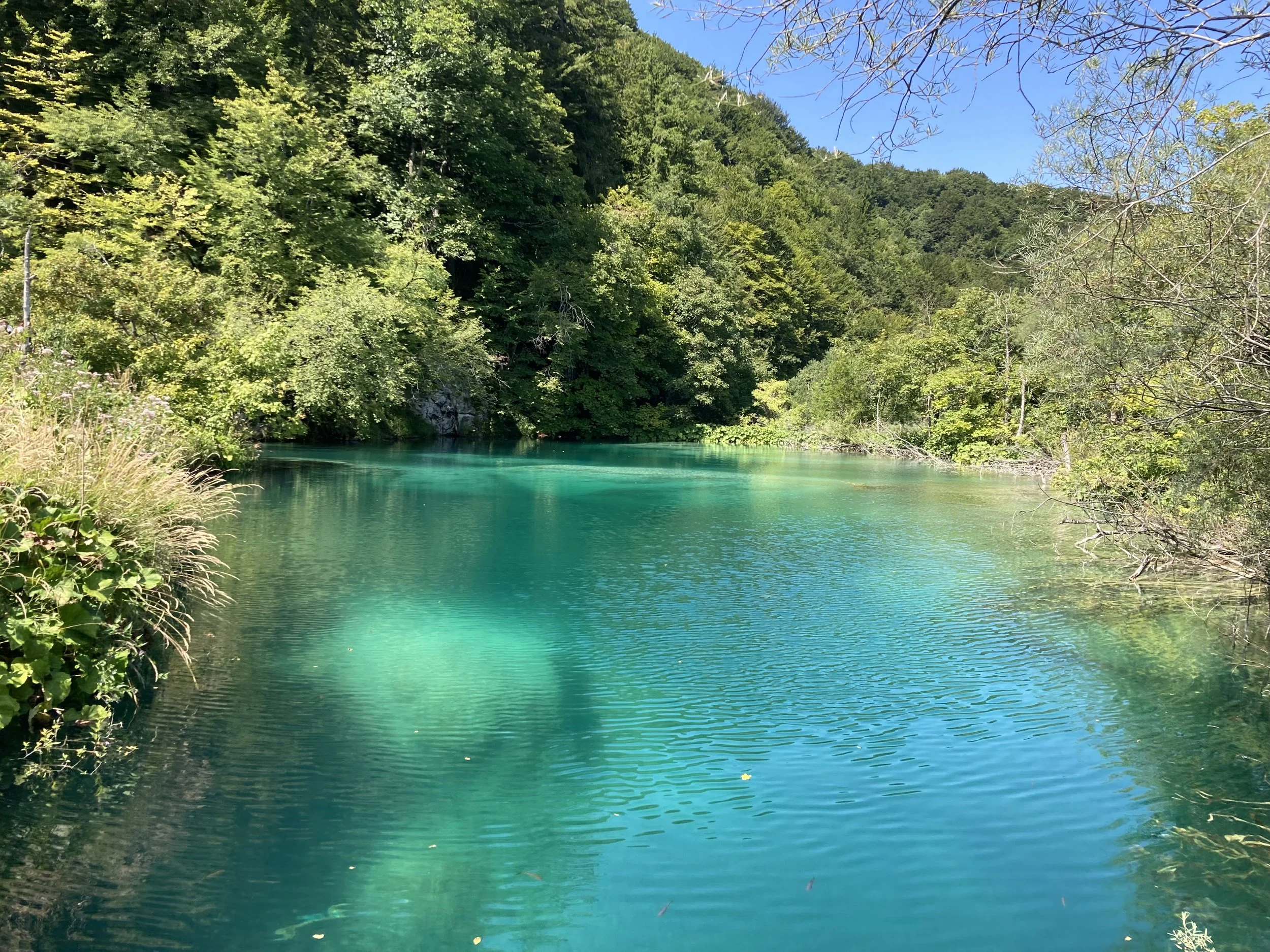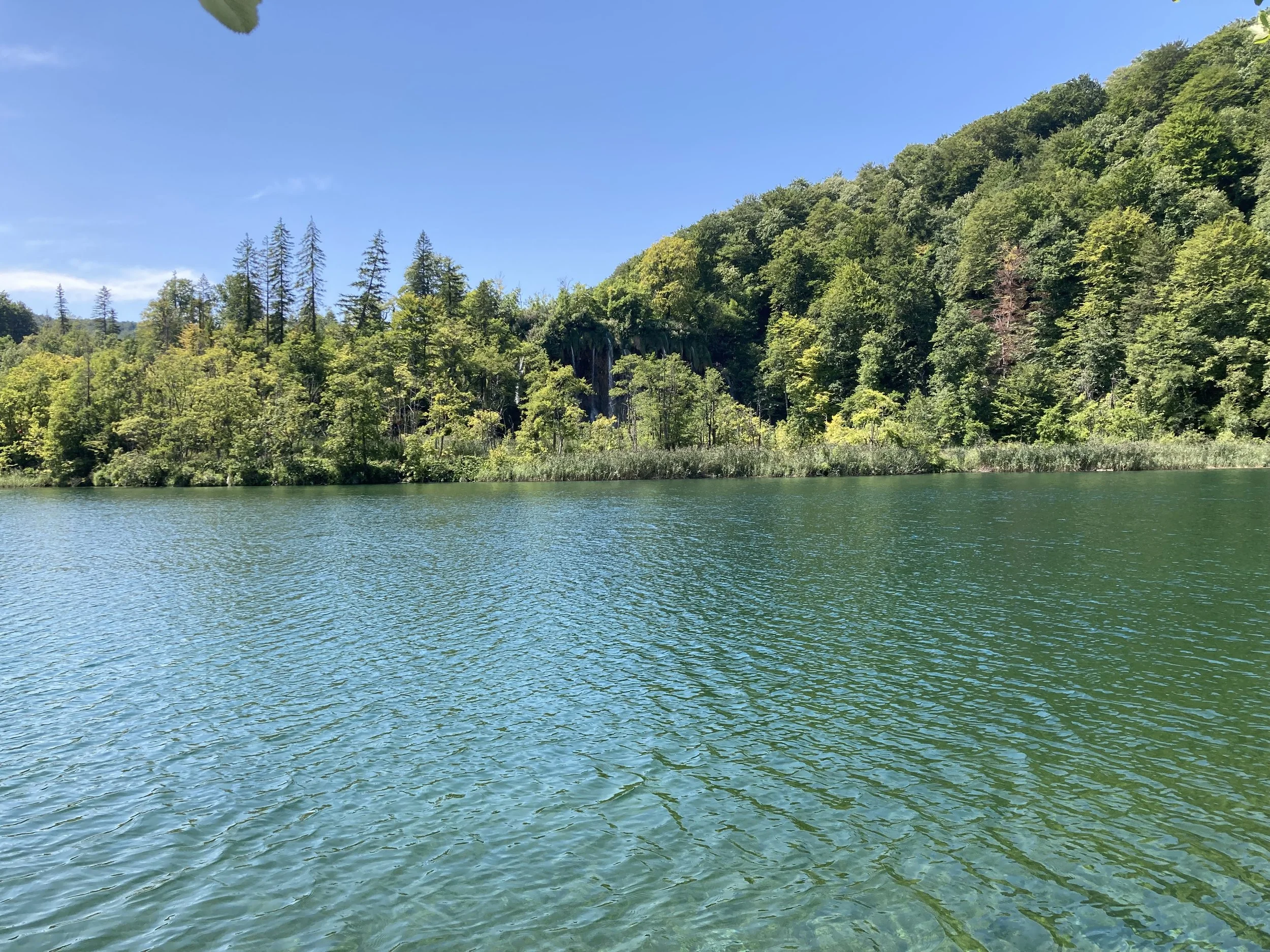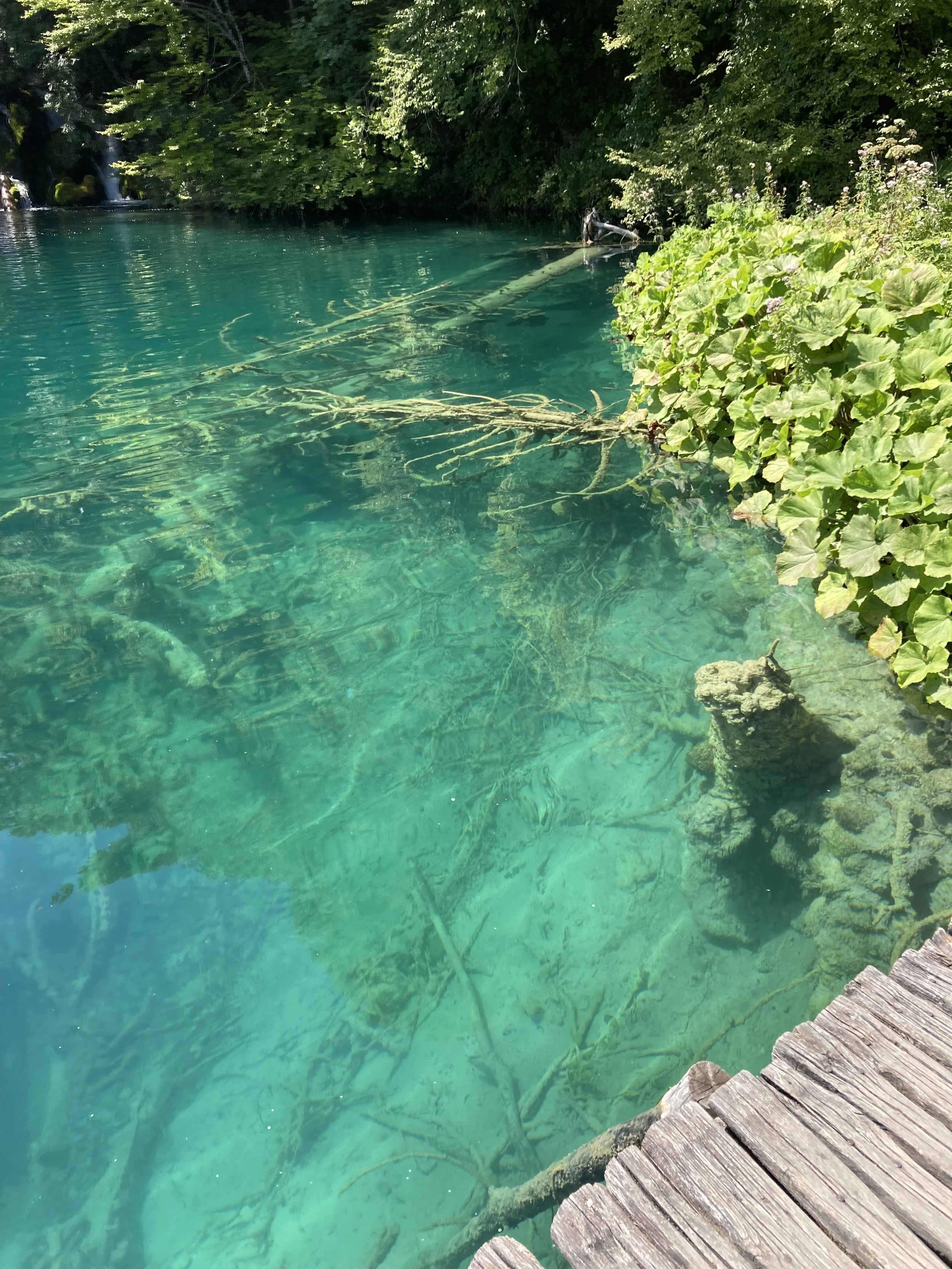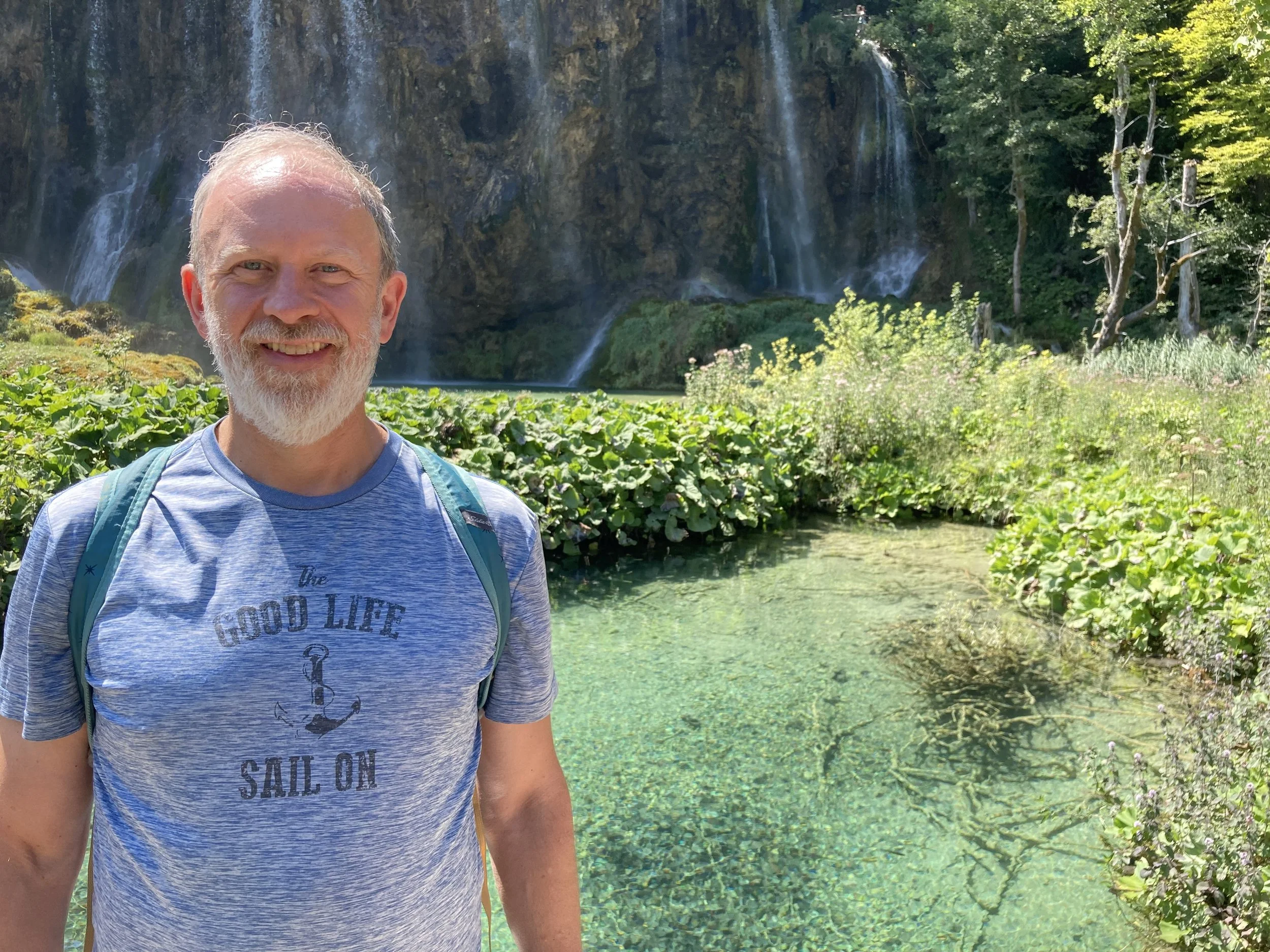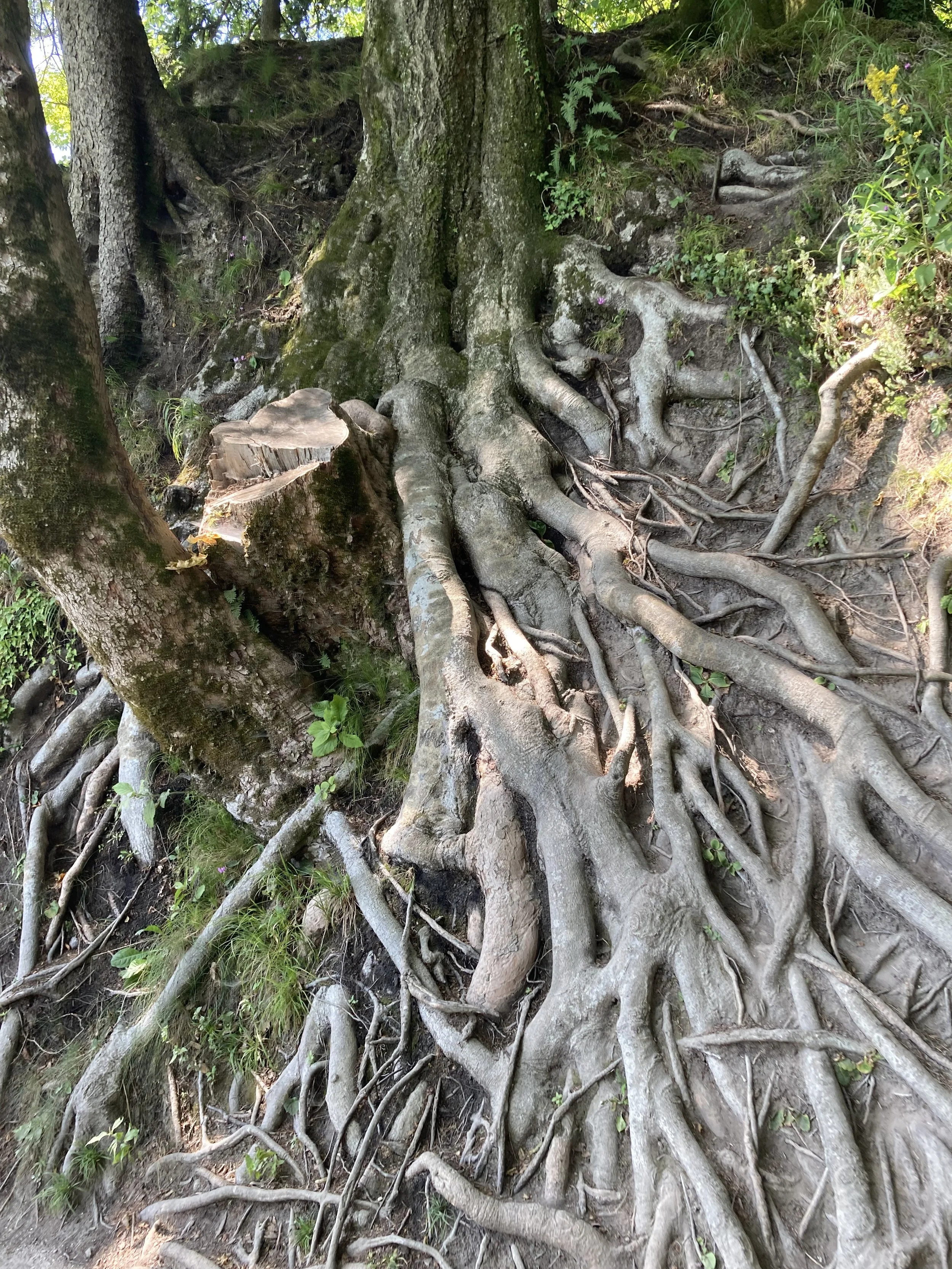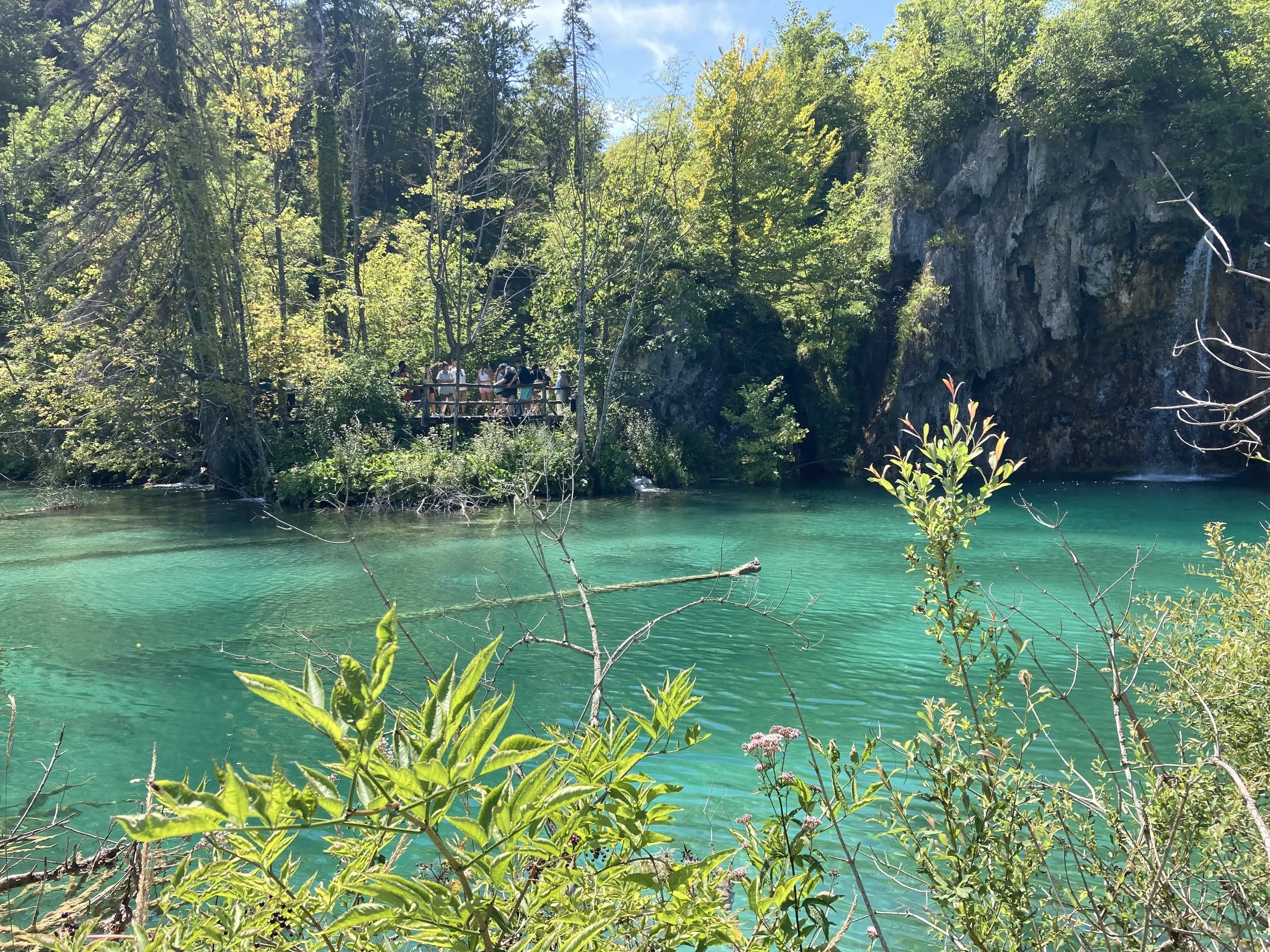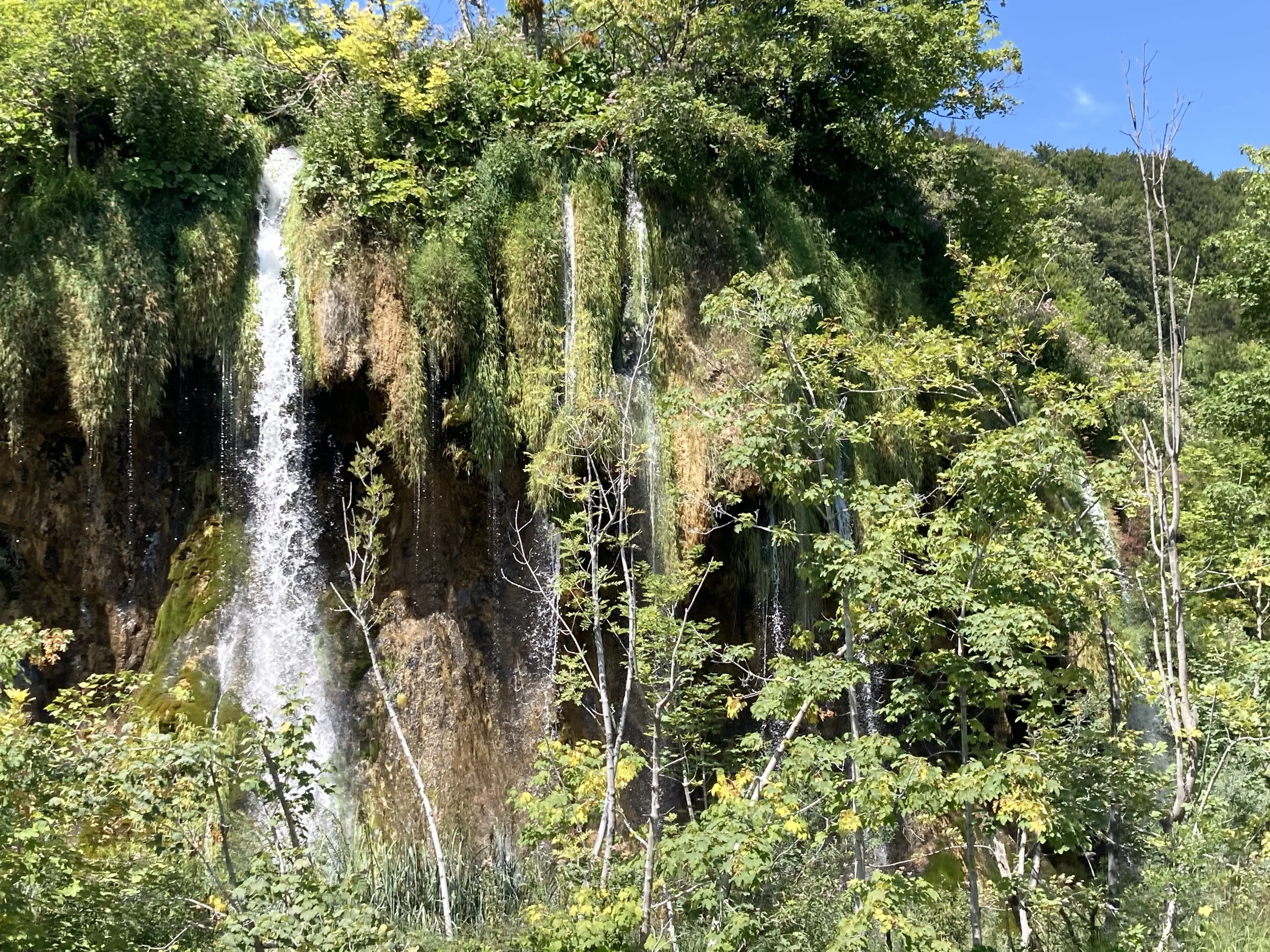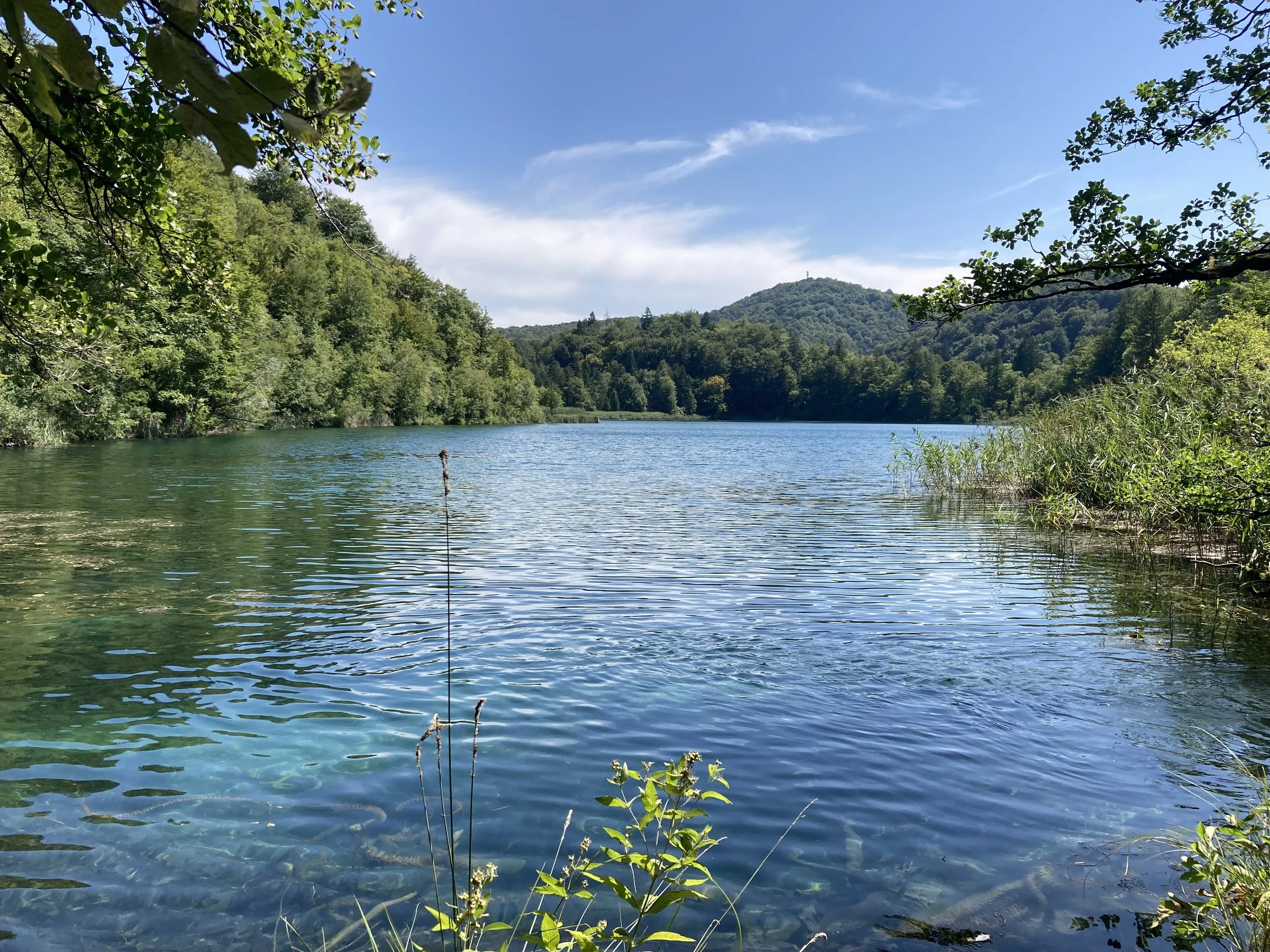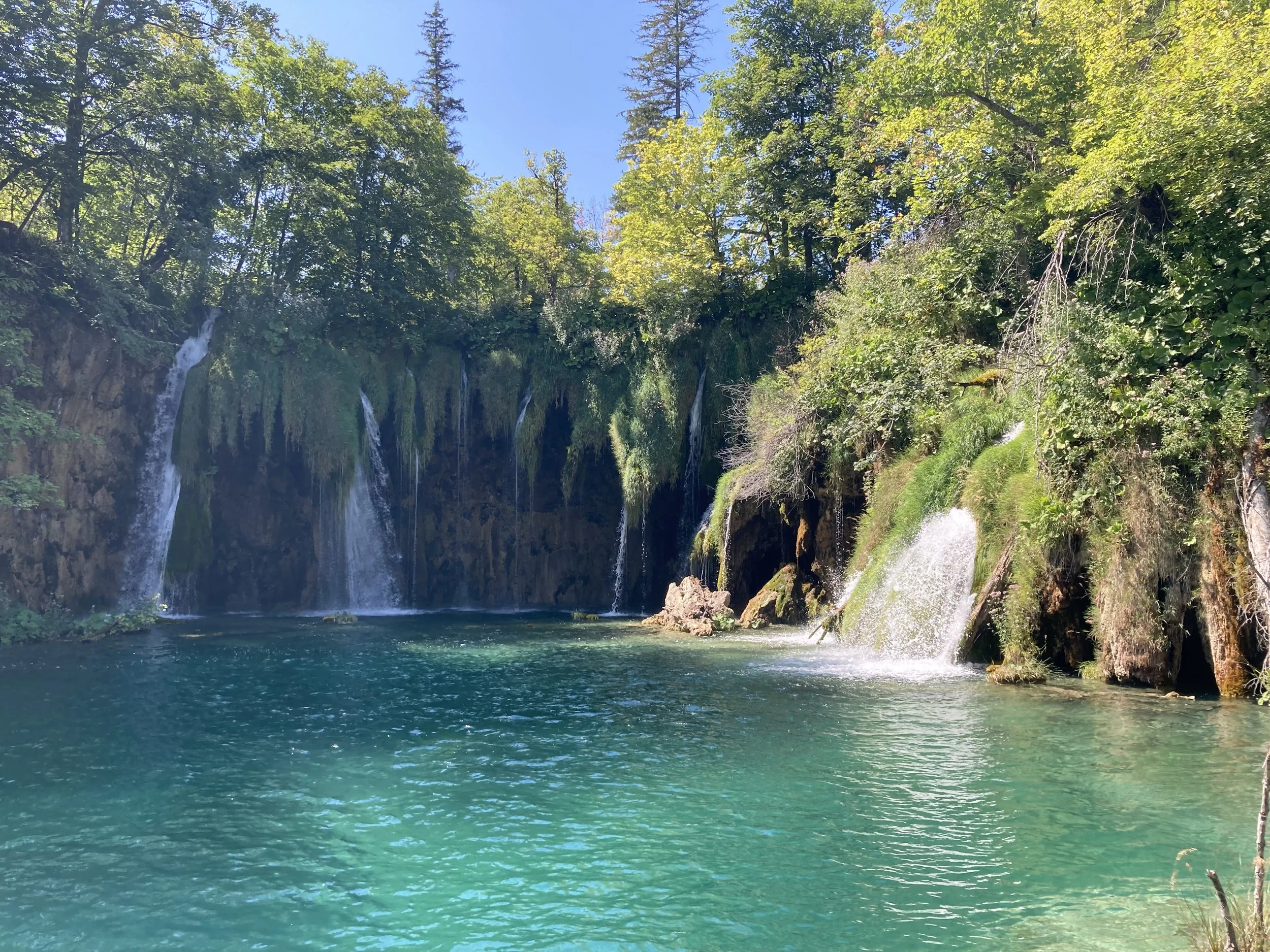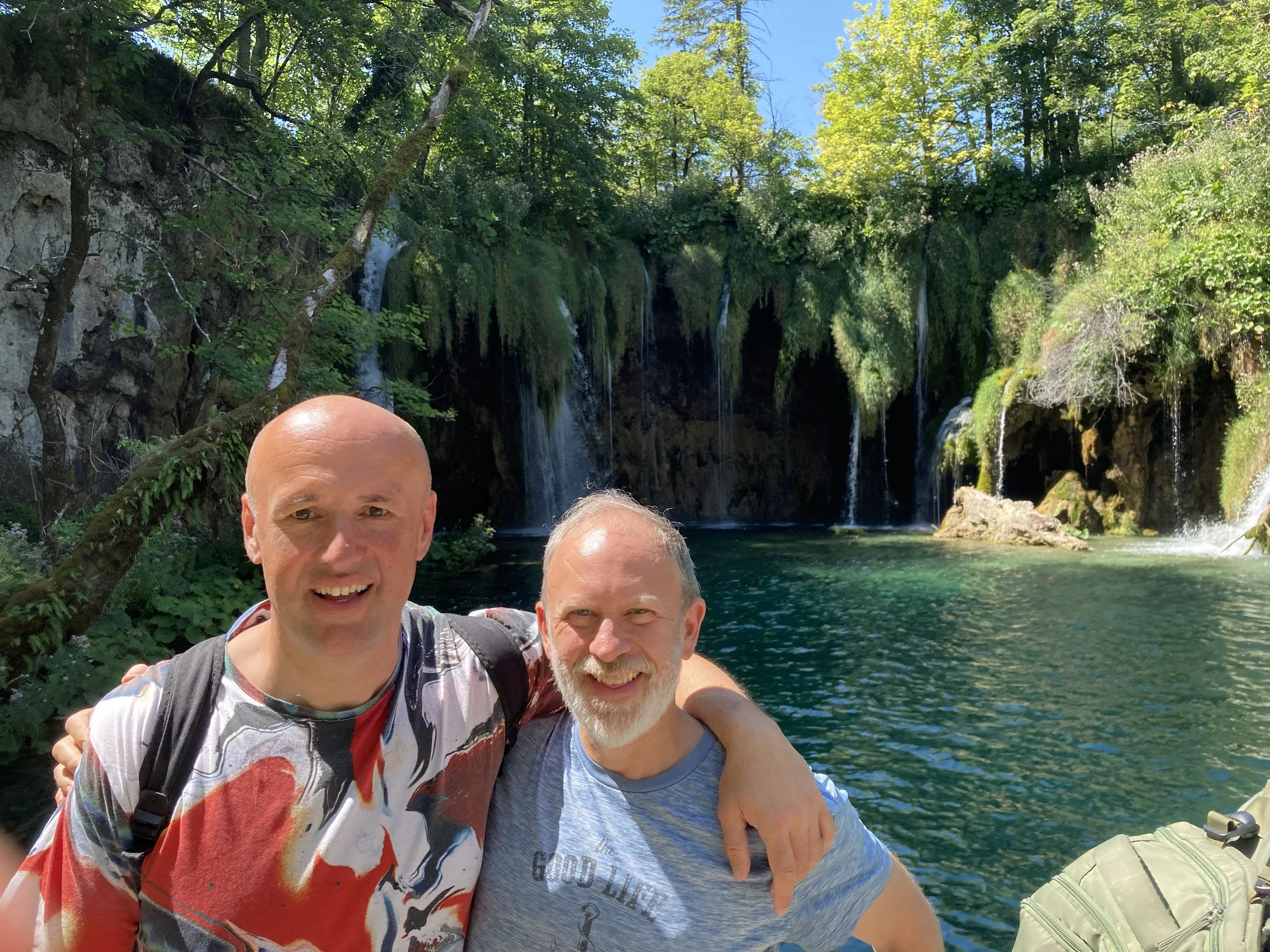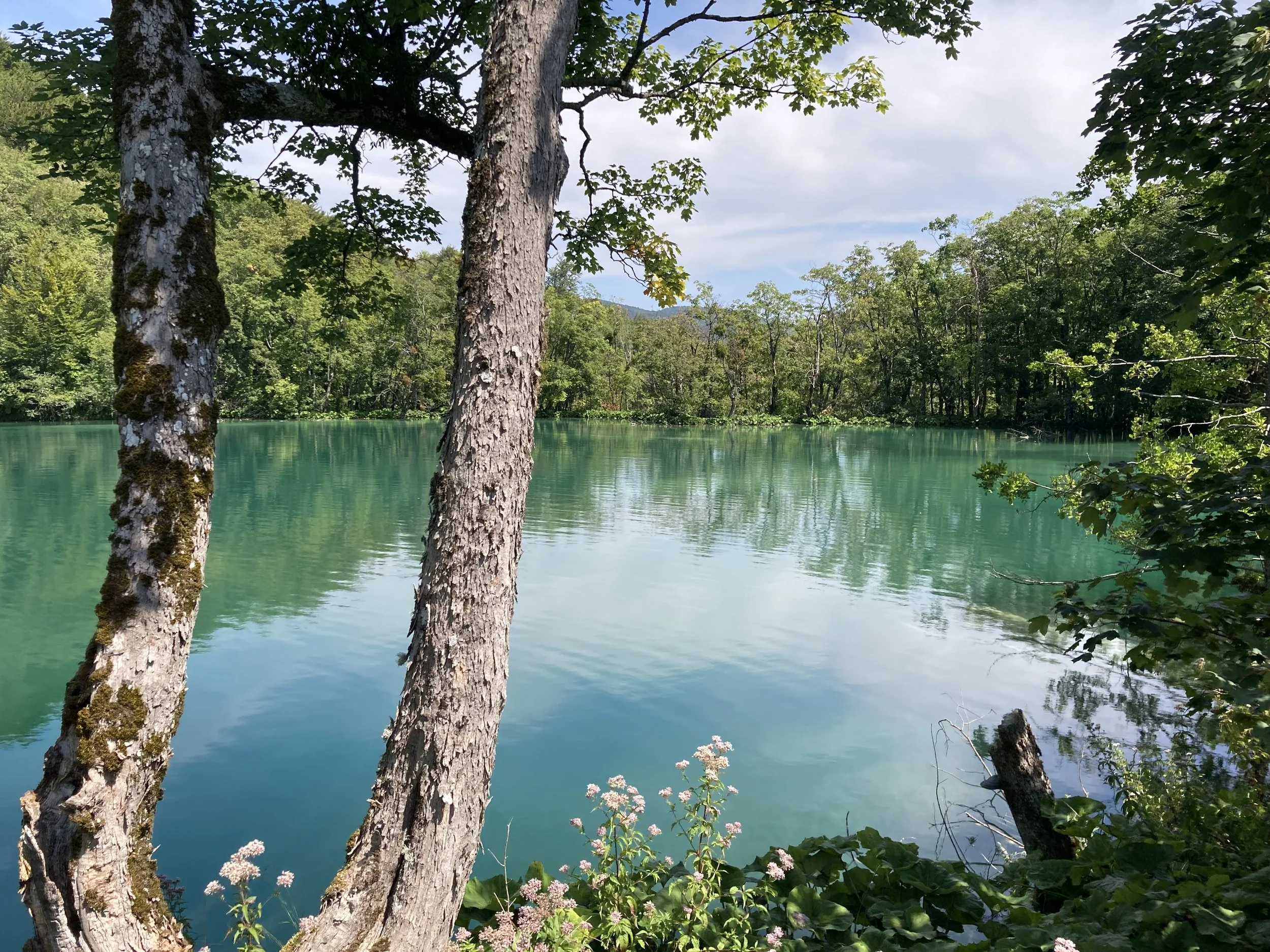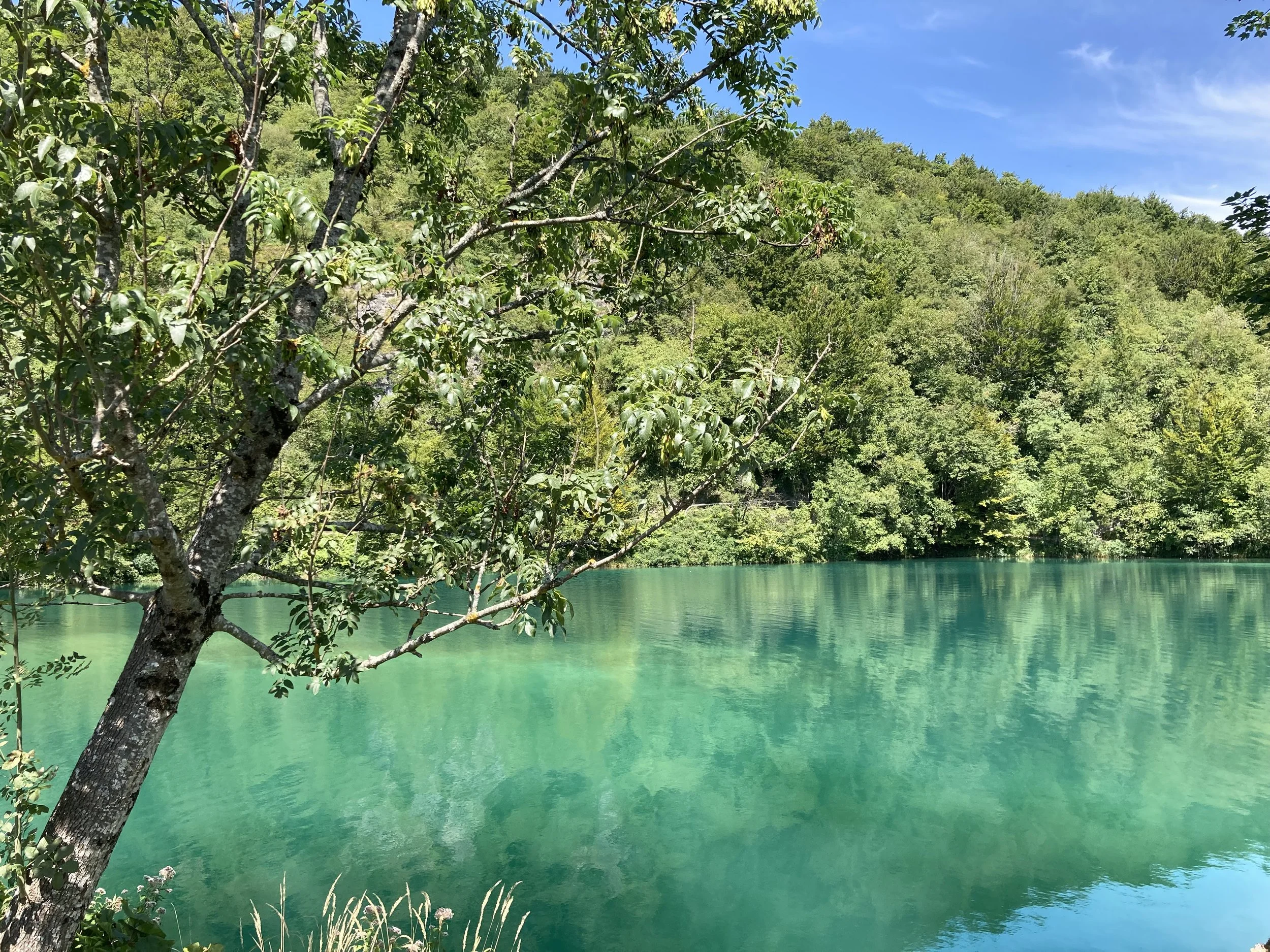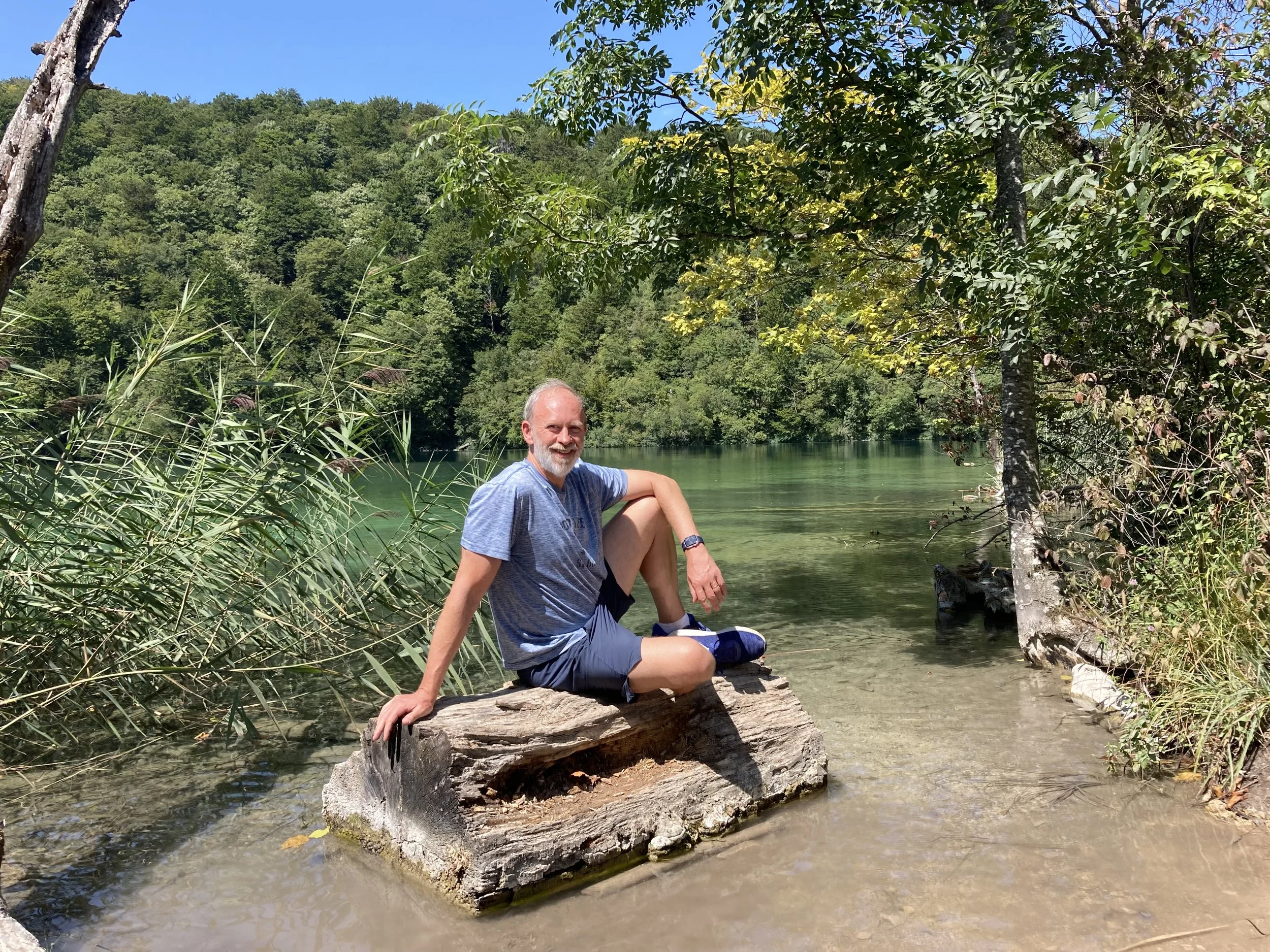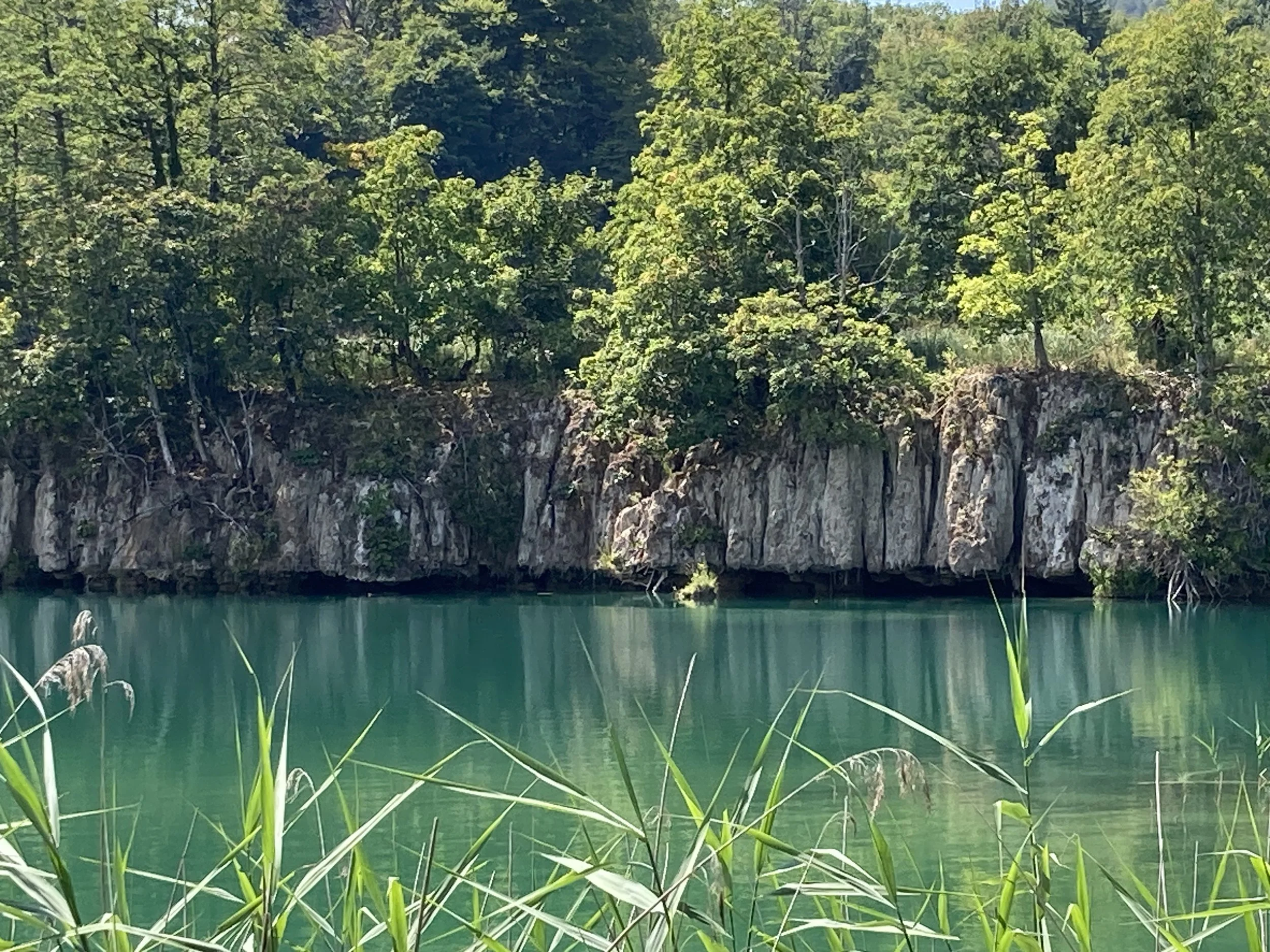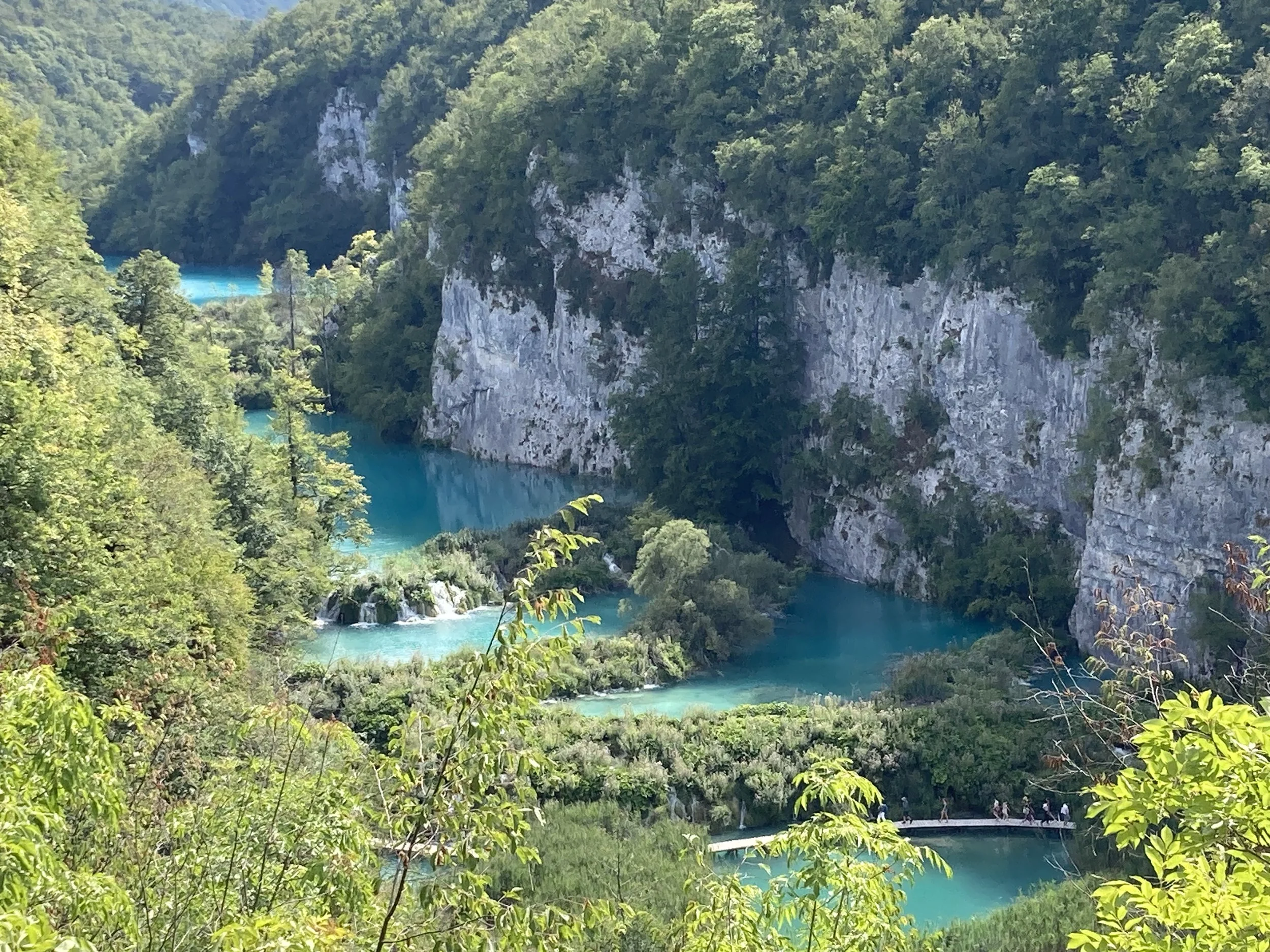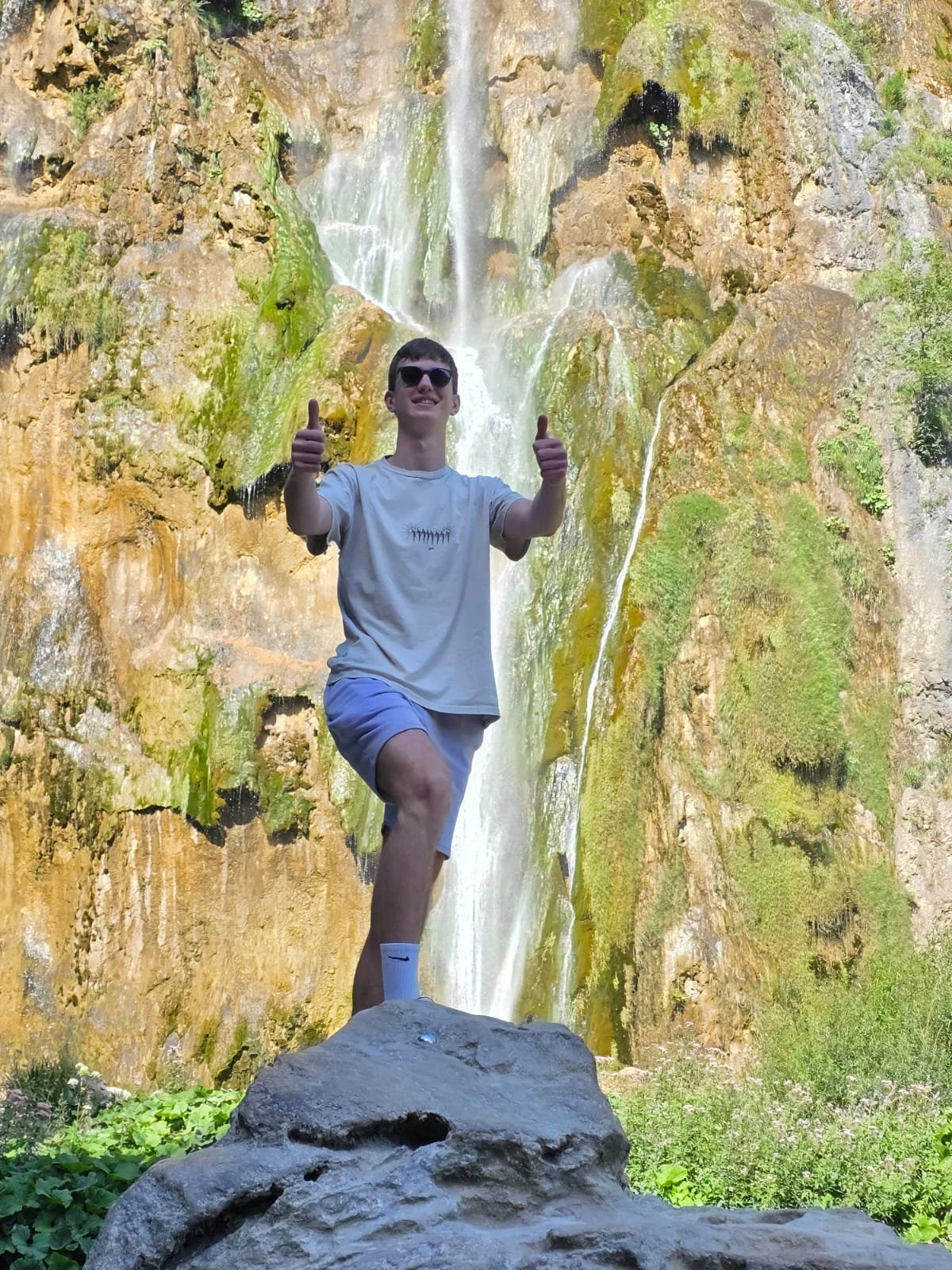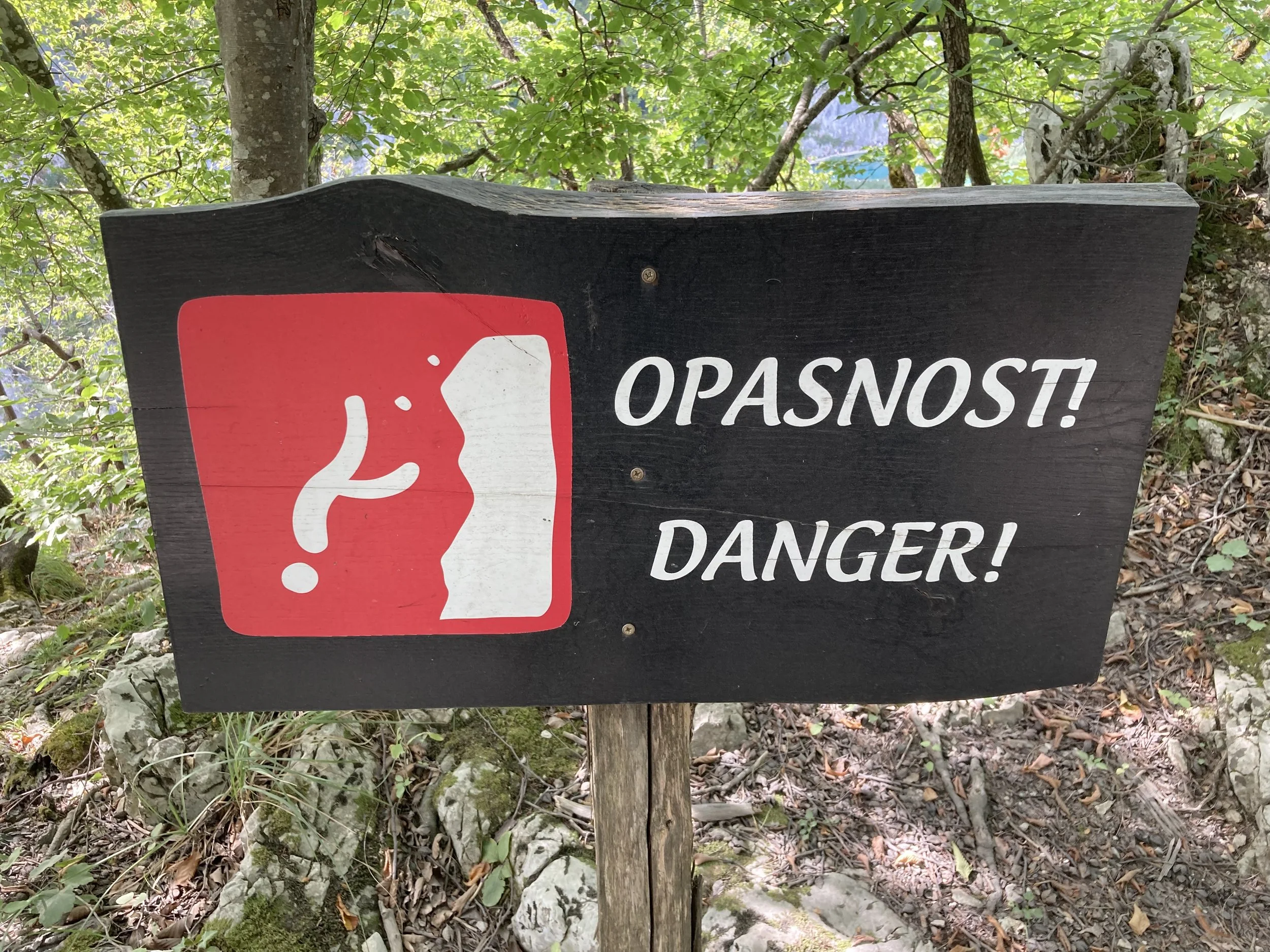Croatia: Plitvička Jezera Lakes National Park (August 16, 2025)
On the fourth day of Croatia, my true host shared with me …
…16 Lakes More Beautiful Than The Sea!
When it comes to national parks, I’ve seen my fair share over my lifetime (and from many diverse nations). Now I understand why tourists come from all over the world to visit Plitvička Jezera and see the 16 “named” lakes and over 90 waterfalls interconnected between these 16 gigantic lakes. I had the pleasure of hiking just under 10 miles (over 20,000 steps) with Nikola Maras and his son, Dino. The three of us adventured through this jaw-droppingly gorgeous park.
At the risk of believing everything you read on the Internet, it appears that the vibrant aqua-blue color of the water comes from the moss that gets fossilised into rock that surrounds the lake. The type of algae that blooms in the waters of the Plitvička Jezera Lakes releases gases as it grows and decomposes, and when those gases react with the water, the result is a stunning shade of blue-green azure. The exact blue is always changing though, as the mineral and gases react to the sunlight, which is why in some photos the water vary from what appear to be a really dark green or really stunning bright blue.
When I dug in further, it seems there are actually four naturally occurring phenomenon working together to create this remarkable beauty:
Calcium Carbonate: The lakes are situated in a karst landscape, where limestone rocks are prevalent. The water flows through these rocks, dissolving calcium carbonate (i.e. the limestone). This dissolved calcium carbonate acts like a mirror, reflecting sunlight and contributing to the blue color. But it’s not the only factor as I just shared above …
Algae and Microorganisms: Certain types of algae (i.e. the “moss” I was sharing about) and microorganisms thrive in the lakes and play a crucial role in light scattering. As these organisms grow and decompose, they release gases that interact with the water, further enhancing the blue and green tones.
Sunlight: The angle of sunlight also affects our photographs and perceived color of the lakes, with different times of day and weather conditions producing varying shades of blue, green, and turquoise. So the time of day you visit and the weather conditions have an effect on your experience.
Tufa Formation: The continuous formation of travertine barriers (tufa), made of precipitated calcium carbonate, also contributes to the lake's unique appearance. These barriers, which dam the lakes and create waterfalls, are a result of the mineral-rich water and the biological activity within the lakes.
So, all that said, the stunningly beautiful aqua-blue color of the 16 lakes in Plitvička Jezera National Park is a natural phenomenon resulting from the delicate interplay of sunlight, dissolved minerals, algae, and the ongoing geological processes that shape the lakes. This is the interconnected oneness of nature on display for all to see. And it’s such a delicate balance that Croatia banned swimming and water sports in the lakes in 2006.
And that was a really smart move with more than 1 million visitors annually, not having all that pollution in these incredible lakes, well, the results speak for themselves. You might be hot walking around these lakes, but there’s stunning beauty everywhere you look. Despite being here for six hours, I could easily have spent several days admiring all that there was to see.
And yes, if I had more time, I’d practice more Yoga in front of the falls ;-)
Of course, the Croatians know about idiots like me and even made a sign to deter people like me from doing the things I do (like a Yoga tree pose on an unstable boulder just to get a good picture):
My favorite part of this sign is that the guy is falling head first (without arms)
Oh well, some people never learn. But I thoroughly enjoyed this day and will continue to breath in all the beauty that I captured from the 16 lakes and more than 90 waterfalls. I also learned that the Croatians have a word for the “minor” waterfalls. They call them “Slap” waterfalls. It’s a good word for the falls that are not the major ones going over cliffs, but rather make that slapping noise as they quickly move water through a channel.
I captured a few more videos of these waterfalls as I find them to be so relaxing. I’ll post another one in the next blog post as we went to a different national park, Krka, which had a similarly breathtaking waterfall along with forest nature trails and even another rock for me to share a unique pose — this time from my Soo Bahk Do, Moo Duk Kwan (martial arts) instead of yoga. Enjoy!




